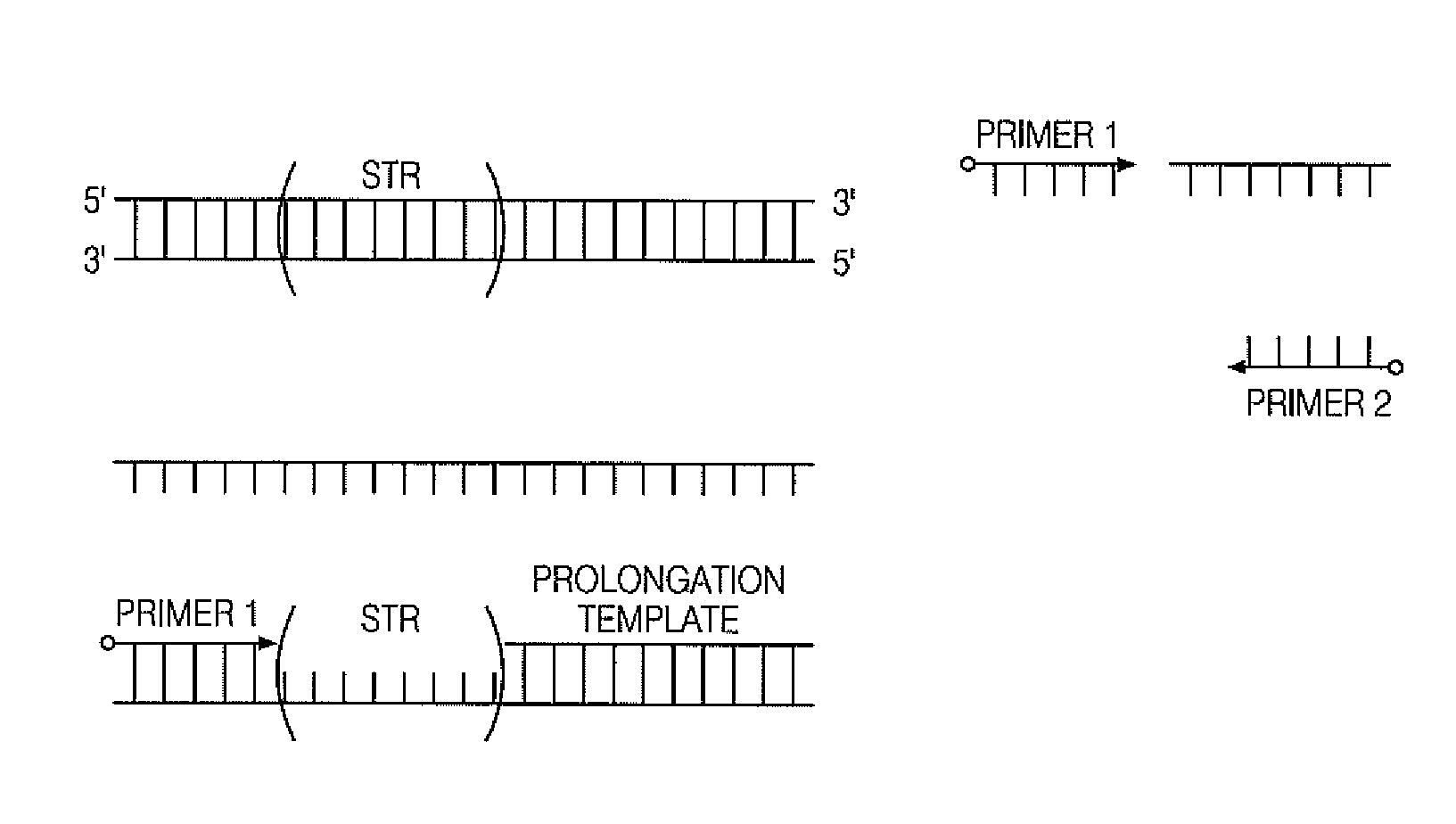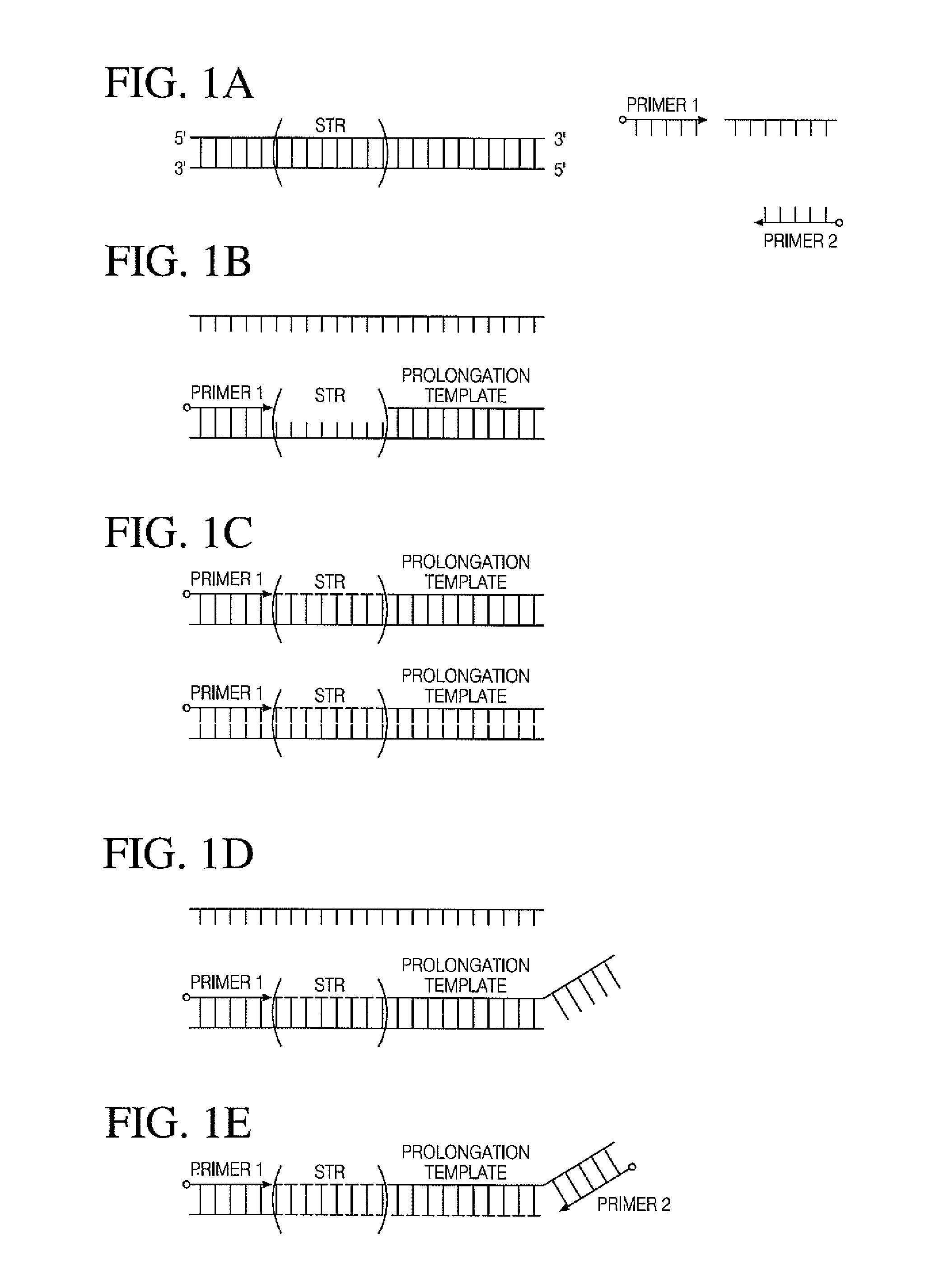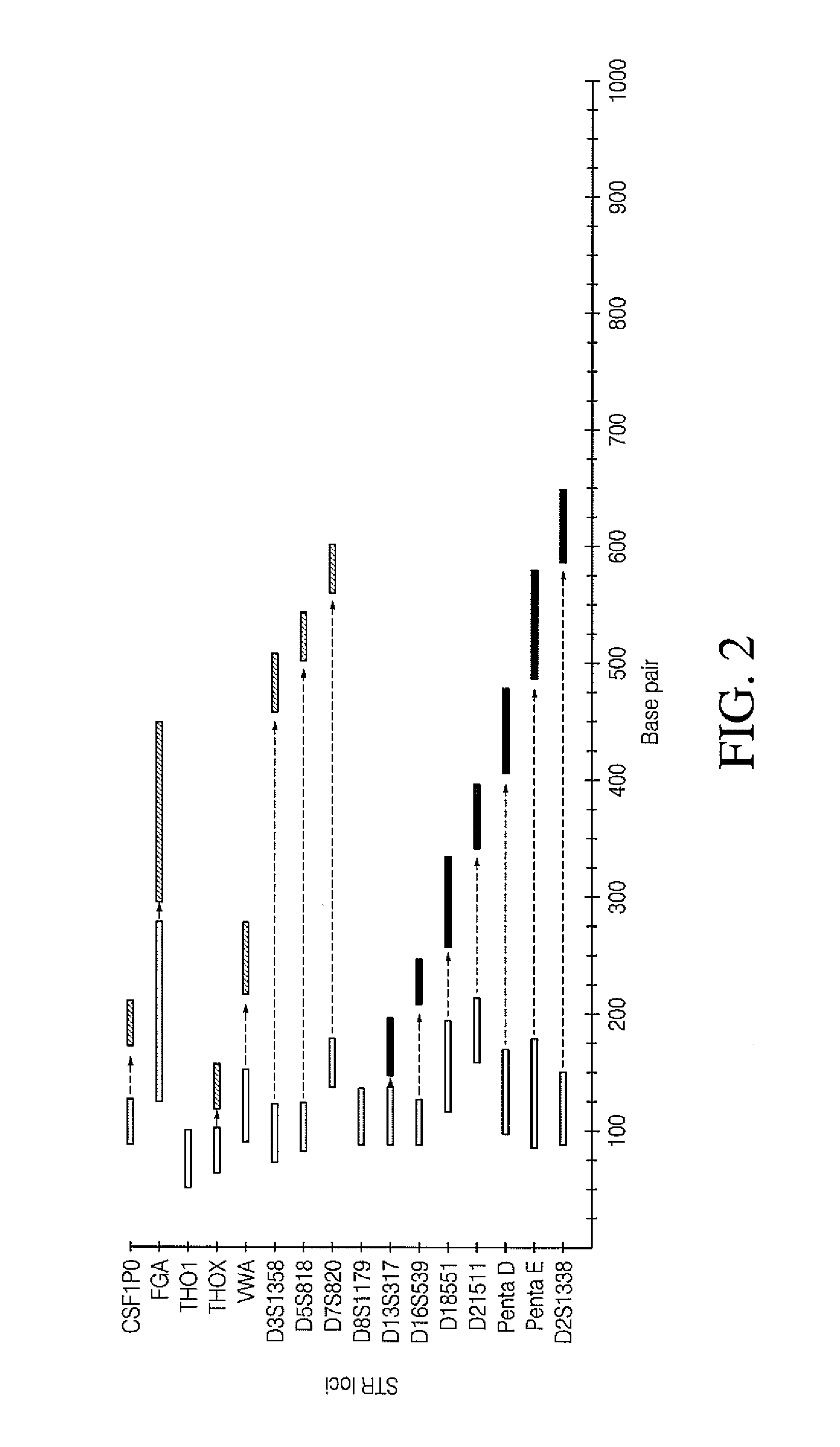All mini-STR multiplex with increased C.E. through-put by STR prolongation template fusion
- Summary
- Abstract
- Description
- Claims
- Application Information
AI Technical Summary
Benefits of technology
Problems solved by technology
Method used
Image
Examples
examples
Integrated Single Tube Extension Ligation with Single Prolongation Template
[0087]A simultaneous multiplex PCR ligation reaction is used to amplify and combine the CODIS STR loci with specific prolongation templates. 1 ng. of genomic DNA isolated from the 9947A cell line is used for target amplification. The reaction is performed in a reaction volume of 50 μl. using a master mix containing 1× Phusion HF buffer (Thermo Scientific), Phusion Hot Start II High-Fidelity DNA polymerase (Thermo Scientific), 0.1 μg / μl Tma DNA ligase, 0.2 mM each deoxynucleotide triphosphate, 2.0 mM MgCl2 and 0.5 mM NAD+. Representative reaction conditions are: 98° C. for 30 s; 28 cycles at 98° C. for 10 s, 55° C. for 30 s, 72° C. for 15 s; 72° C. for 5 min; and then 4° C. soak. The final products are subjected to capillary electrophoresis.
[0088]Each sample for analysis is prepared by adding 1 μl. of the final reaction product to of Hi-Di formamide (Applied Biosystems) containing 0.75 μl. of GS500ROX size sta...
PUM
| Property | Measurement | Unit |
|---|---|---|
| Length | aaaaa | aaaaa |
| Affinity | aaaaa | aaaaa |
Abstract
Description
Claims
Application Information
 Login to View More
Login to View More - R&D
- Intellectual Property
- Life Sciences
- Materials
- Tech Scout
- Unparalleled Data Quality
- Higher Quality Content
- 60% Fewer Hallucinations
Browse by: Latest US Patents, China's latest patents, Technical Efficacy Thesaurus, Application Domain, Technology Topic, Popular Technical Reports.
© 2025 PatSnap. All rights reserved.Legal|Privacy policy|Modern Slavery Act Transparency Statement|Sitemap|About US| Contact US: help@patsnap.com



